
Field Trip 5: TelePort – A Tour of the Lizard’s Landscape of Telecommunication
Steven Rowell devised this field trip with Daro Montag, to explore the many telecommunications sites on the Lizard peninsula. The tour started at the Marconi Museum in Poldhu and with a visit to the monument that commemorates the Marconi Company’s first trans-oceanic wireless communication between Cornwall and Newfoundland in Canada. Other points visited on the trip included the Lloyds Signal Station and Marconi Wireless Station on Lizard Point and the Goonhilly Satellite Station on Goonhilly Downs. The group stopped for lunch in Britain’s most southerly café, above the old Lizard lifeboat station at Polpeor cove.
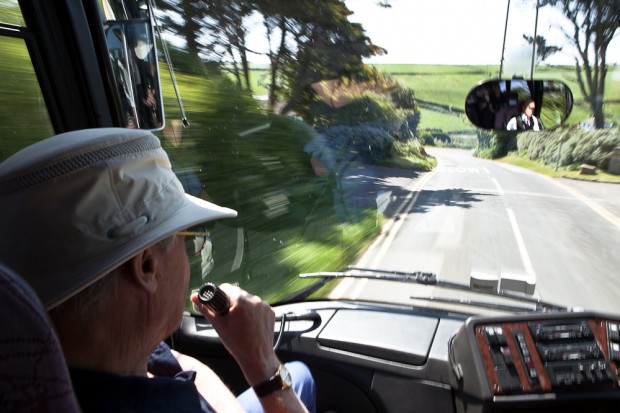
David Barlow, amateur radio specialist and volunteer at the Lizard Wireless Station, gives a history of wireless communication as the coach heads as far south as it can go.
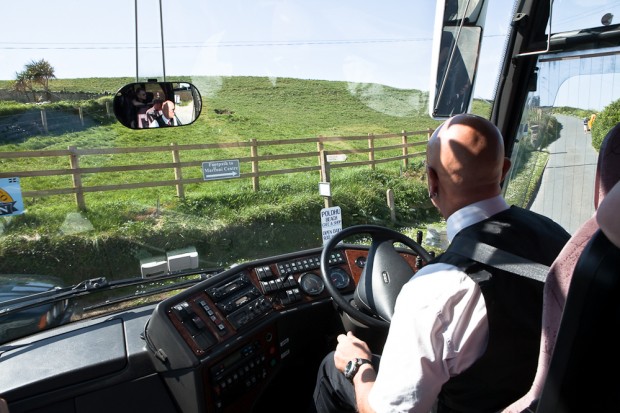
Approaching the Marconi Centre, historic antenna site, and monument. Tour co-organiser, Daro Montag, is visible in the rear-view mirror, behind the driver.
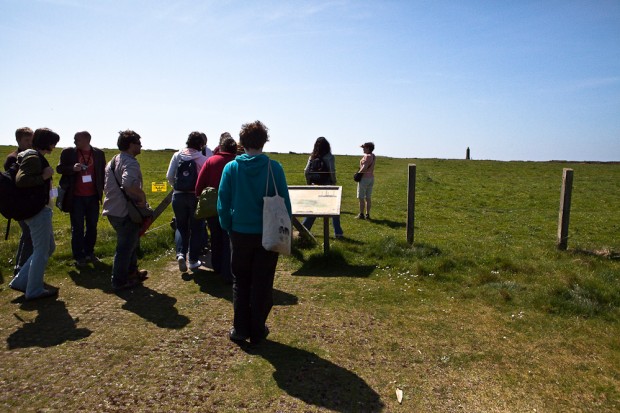
Tour participants on the trail, towards the Marconi Monument, at Poldhu.

Keith Matthew, Hon. Sec. Poldhu Amateur Radio Club, engages with the group, engaging with the Marconi Monument - a granite pillar commemorating the first transatlantic radio transmission on December 12, 1901 between Poldhu and St. John's Newfoundland.
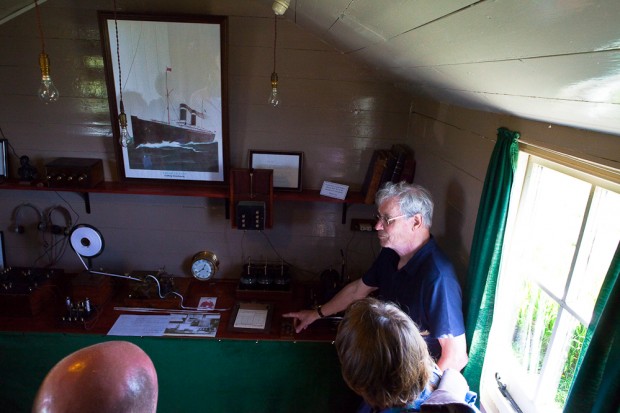
Inside the Lizard Wireless Station, watching David Barlow create an electric arc on some of the historic equipment there.
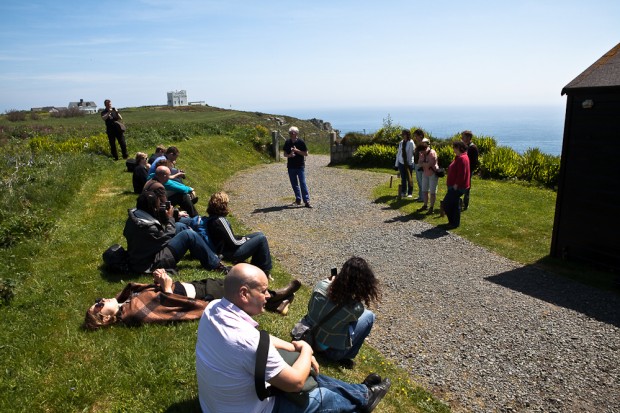
The group, outside the Lizard Wireless Station, soaking up sun and stories. The white cube structure in the background, the Lloyds Signal Station, is the oldest surviving purpose-built wireless communications station in the world.
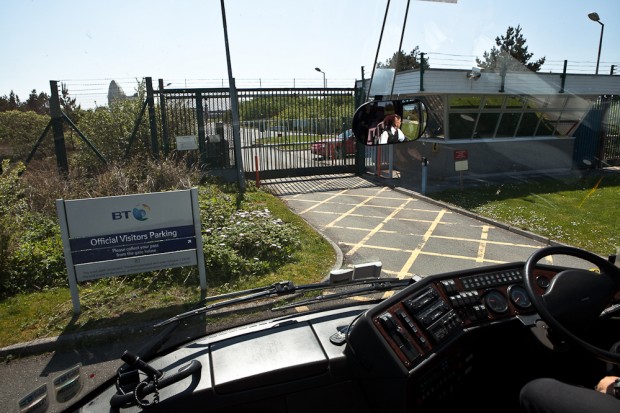
Approaching the Goonhilly Satellite Earth Station. All equipment on site is currently inoperative and the theme park there is now closed. Something wonderful is happening, or so they say at BT, in regards to the possible future of this site.
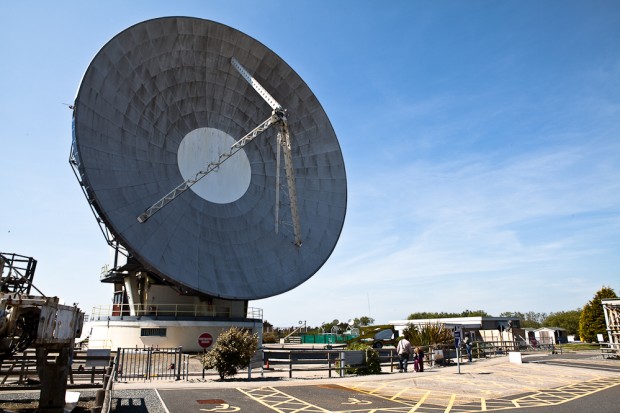
Visiting the "Arthur" antenna dish at Goonhilly. Signals were received and sent from here to Andover, Maine, USA, via the Telstar Satellite in 1962, another first in telecommunications for the Lizard Peninsula.
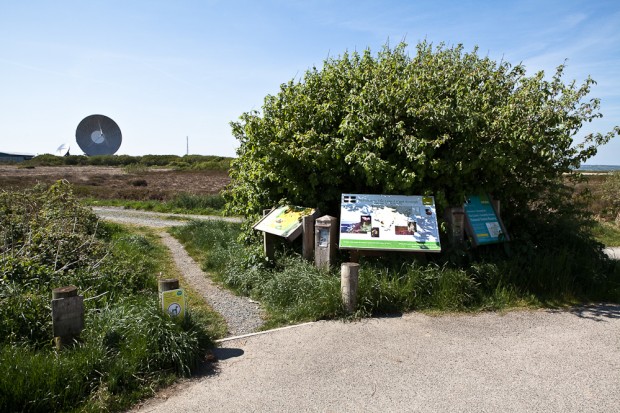
Interpretive plaques and bush at RAF Drytree, a disused collection of partially buried foundations that once housed experimental radar equipment during WWII. RAF Drytree was part of the defence network along Cornwall's more vulnerable coastal areas.
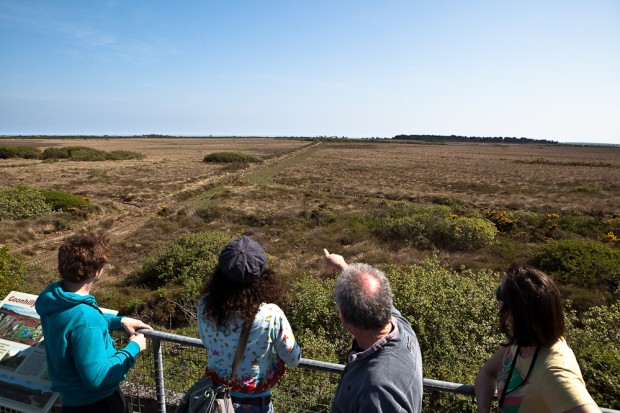
At RAF Drytree: visible in the distance from a building dubbed the "Happidrome", is a clearly defined line in the ground, running south across Goonhilly Downs. Beneath this line of disturbed soil lies one of the (somewhat) hidden subsea fibre optic cables that runs to Kennack Sands, then out to sea and to points beyond, at the speed of light.
Photographs and captions by Steven Rowell.
Read more about Field Trip 5: TelePort in the Programme listing.
